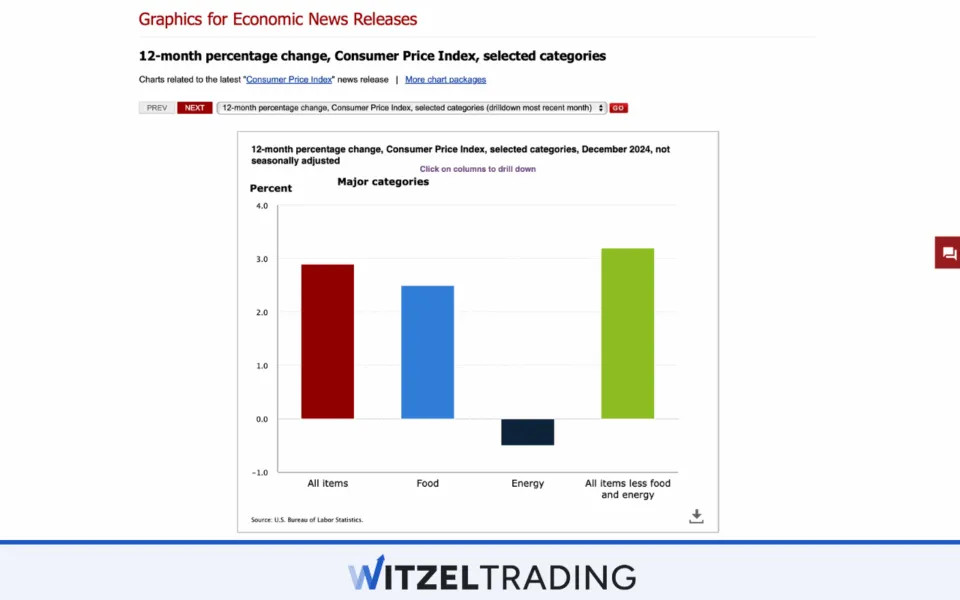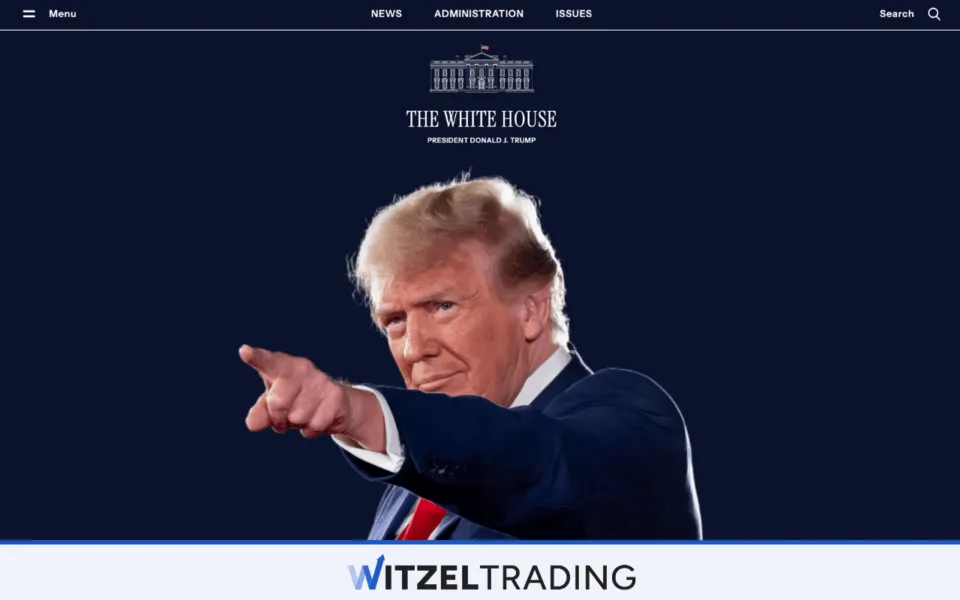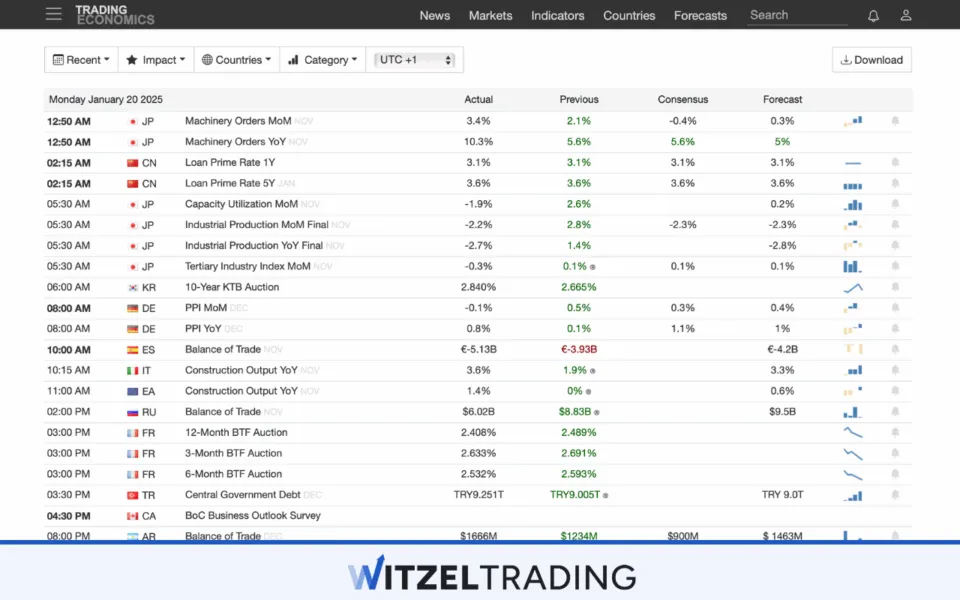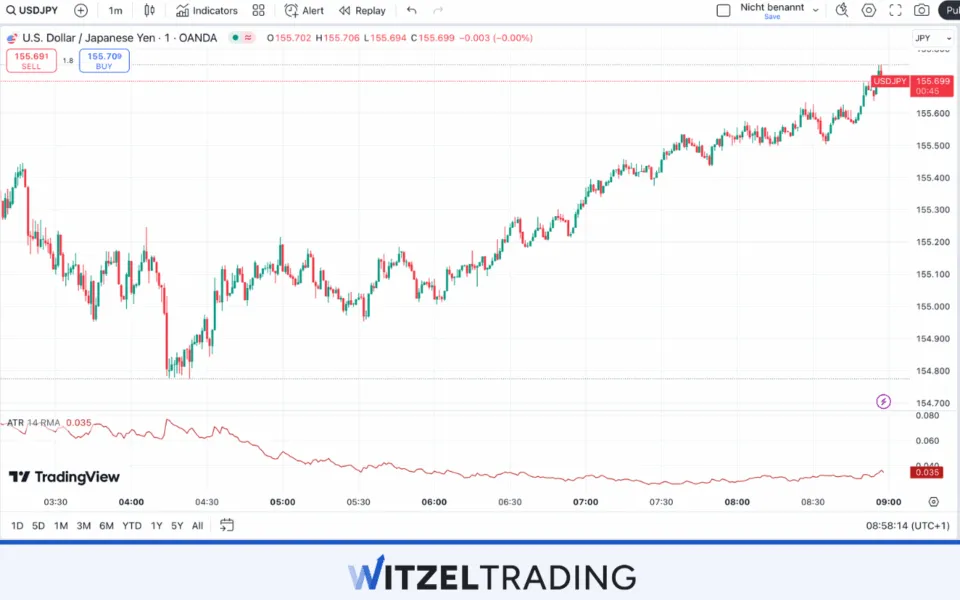Fundamental analysis in forex is essential to understand the trading of the main factors that influence currency values. Since it focuses more on political events, economic indicators, and central bank policies, traders use it to gauge the strength or weakness of a currency and make informed trading decisions. Keep reading this article to learn more about using fundamental analysis in forex.

Key Facts About Fundamental Analysis in Forex
- Economic Indicators Drive Currency Movements: Fundamental analysis relies on data like GDP to predict currency trends.
- Global Events Influence Forex Markets: Political elections, trade agreements, and geopolitical tensions can create volatility in currency prices, making geopolitical analysis an essential part of fundamental analysis.
- Long-Term Trends: Fundamental analysis is best for forecasting long-term market movements.
- Volatility Peaks During Key News Releases: Traders can use fundamental analysis to navigate and anticipate sharp price fluctuations caused by Non-Farm Payrolls (NFP) reports.
- Useful for Risk Management: Understanding fundamentals helps traders prepare for unexpected market shocks or trends.
- Requires Continuous Monitoring: Economic conditions and geopolitical factors are dynamic, requiring traders to stay updated with real-time information.
What is The Fundamental Analysis?
Fundamental analysis is a method traders use to evaluate or predict the fair value of an asset. Here, traders analyze economic, political, and social factors influencing an asset’s price to predict the market movement.
With fundamental analysis, traders can determine whether the intricate value of an asset is higher or lower than its market trading value. This makes it possible for traders to make a profit on the prediction that it is overvalued or undervalued.
What Are The Parts of The Fundamental Analysis?
Fundamental analysis in trading comprises several key parts that help traders evaluate the fair value of an asset. The following are some of the parts:
Economic Indicators
Economic indicators track a country’s economic performance and are often released by the government at a specific time. It is a detailed measurement of various aspects of a country’s economic health that traders use to determine the strength of a currency’s value. Economic indicators comprise the following data:
- Inflation Rates: Inflation is measured with metrics like the Consumer Price Index (CPI). It is a major economic factor, indicating how fast the prices of goods and services are rising. Moderate inflation in an economy can be a sign of economic growth. In contrast, high inflation may lead to the central bank’s intervention, thereby influencing currency value and volatility in bonds, stocks, and commodities.

- Unemployment Levels: A high unemployment rate indicates economic weakness, which reduces investor confidence in a currency. In contrast, a lower rate of unemployment often boosts the currency due to increased consumer spending and economic growth. Most forex traders usually react to employment data releases like the U.S. NFP because they can influence future central bank actions.
- Retail Sales: An increase in retail sales also indicates strong consumer confidence, which boosts the GDP and currency. For example, a rise in U.S. retail sales might increase the buying pressure of the USD.
Market Trends
Global market trends like trade balances and commodity prices also influence currency values in the forex market, which is why it’s a key part of fundamental analysis. For example, an export-driven economy like Canada will experience a strengthened currency with rising oil prices, while a fall in price will equally weaken the currency.
Trade surpluses also boost currencies as foreign buyers increase demand, while trade deficit causes currency depreciation. News events like financial crises and natural disasters disrupt trade and increase forex market volatility.
Geopolitical Factors
Geopolitical events like elections and trade negotiations are also key to fundamental analysis. This is because they can significantly strengthen or weaken a currency’s value. A good trade agreement between nations can also positively influence economic relations and currency demand. In the same context, trade wars and tariffs can hurt economies, leading to currency depreciation.
How to do Fundamental Analysis For The Forex Market
At WR Trading, we’ve analyzed a step-by-step process on how to do a fundamental analysis of the forex market:
- Monitor and track economic indicators like GDP, inflation rates, and employment data to gain insights into a currency’s strength.
- Keep up with the Central Bank policies as newly released currency policies influence the currency’s values.
- Follow up on elections, trade agreements, and other geopolitical events as they create market volatility, which can impact the currency value.

- Stay updated with news releases by utilizing the economic calendar to track events that could impact the currency value. Always analyze how the market reacts to these news releases to gauge potential price movements
- Evaluate and understand market sentiment to predict short-term price movements.
- Conduct and use the top-down analysis to identify trends that can affect several currencies and the bottom-up analysis to focus on major currencies based on a detailed analysis of their economic indicators.
- Stay updated on global trends like financial crises and natural disasters that can disrupt trade and influence risk-sensitive currencies.
- Understand how to interpret economic data with currency pairs. For example, a rise in interest rates in the U.S. may strengthen the USD against other currencies due to increased investor confidence.
- Develop trading strategies leveraging your fundamental analysis insights.
What Are The Pros And Cons of Fundamental Analysis in Forex Trading?
At WR Trading, we’ve analyzed the pros and cons of fundamental analysis in Forex Trading, and they are in the table below:
Pros
- With fundamental analysis, traders can easily identify long-term trends in currency values to yield higher profits.
- It helps traders identify overvalued or undervalued currencies based on their intrinsic value.
- It helps traders assess currency trading risks by evaluating economic indicators and geopolitical events, enhancing risk management and informed decision-making.
- Fundamental analysis equips traders with tools for analyzing news releases and identifying trading opportunities.
- It helps traders to evaluate and position themselves ahead of central bank policies and profit from the currency movements.
- With fundamental analysis, traders can align their trading strategies with market sentiment to make more accurate predictions.
Cons
- It is time-intensive because it requires extensive research, which can be demanding for traders who prefer short-term trading plans.
- It is complex and may be challenging for beginner traders
- Fundamental analysis is less effective for day trading than technical analysis.
How to Implement The Fundamental Analysis in Your Forex Strategies?
Whether you’re a new or seasoned forex trader, here’s how you can implement fundamental analysis in your forex strategies:
Combine Fundamental and Technical Analysis
Since fundamental analysis can identify long-term trends, you can pair it with technical analysis to determine the best entry and exit trading points. For example, if the GDP data of an economy reflects a strong economy, you can look for technical setups to buy the currency.
Use Economic Calendar
You can implement fundamental analysis in your strategy using an economic calendar to monitor data releases and events. This will help you align your trading strategy with the economic calendar and prepare for potential volatility around news releases.

Adopt a Risk-Reward Approach
As a trader, you can also use fundamental analysis to assess the potential impact of global events on currency movements. For instance, in situations where there are geopolitical tensions, you can favor safe-haven currencies like JPY because they have stable economies.
Set Realistic Trading Goals
You can also align your trading strategy with the long-term nature of fundamental analysis to manage trading expectations. This will help you make informed decisions and focus on more stable trends.
Fundamental Analysis vs Technical Analysis
Although fundamental and technical analysis are both methods traders use to research and forecast future trends in asset prices, they are different in various ways. Fundamental analysis evaluates assets by measuring their intrinsic value, while technical analysis only focuses on the statistical trends in the asset’s price and volume over time.
In fundamental analysis, traders look at economic factors like inflation, GDP, and central bank policies to understand long-term currency trends. However, technical analysis focuses on charts and patterns to predict the price movements for short-trades.

Most seasoned traders combine aspects of both fundamental and technical approaches to make informed trading decisions. Combining both approaches helps traders identify precise entry and exit points with technicals and use fundamentals to identify overall market direction.
Learn Forex Trading With WR Trading
At WR Trading, you will gain the skills to navigate the forex market effectively. Whether you’re a beginner or a seasoned trader, we offer expert guidance and strategies to help enhance your trading knowledge. We also make available resources like demo accounts where you can practice your trading skills and personalized coaching to aid your transition to a live trading account.
With us, you can master both fundamental and technical analysis to develop a disciplined trading approach. We also focus on training you to find trades with high-risk-reward ratio strategies for a profitable trading experience.
Conclusion
Understanding fundamental analysis in forex helps traders understand market movements driven by economic data and global events. Traders can use this approach to make profitable long-term trades. Some traders also combine fundamental and technical analysis to aid efficient trading decisions. At WR Trading, we guide you on how to apply these strategies to develop a successful trading approach.
Frequently Asked Questions on Technical Analysis in Forex Trading
Why is fundamental analysis important for Forex Traders?
Fundamental analysis is important for Forex Traders, because it provides insights into the economic, political, and social factors driving currency movements. By understanding these elements, traders can predict long-term trends and apply proper risk management strategies.
Can fundamental analysis be combined with technical analysis in Forex Trading?
Yes, you can combine fundamental and technical analysis. It’s a common strategy among experienced traders. Fundamentals help identify the overall market direction, while technicals pinpoint entry and exit points.
What are the key economic indicators to monitor for fundamental analysis?
Key indicators include GDP growth, inflation rates, employment data (e.g., Non-Farm Payrolls), and central bank policies. These metrics reveal the health of an economy and help traders assess the potential strength or weakness of a currency.
How can one learn fundamental analysis in Forex Trading?
To learn fundamental analysis, start by understanding key economic indicators like GDP, inflation, and employment data. Utilize resources like economic calendars, financial news platforms, and trading courses like ours at WR Trading to learn everything from scratch.


